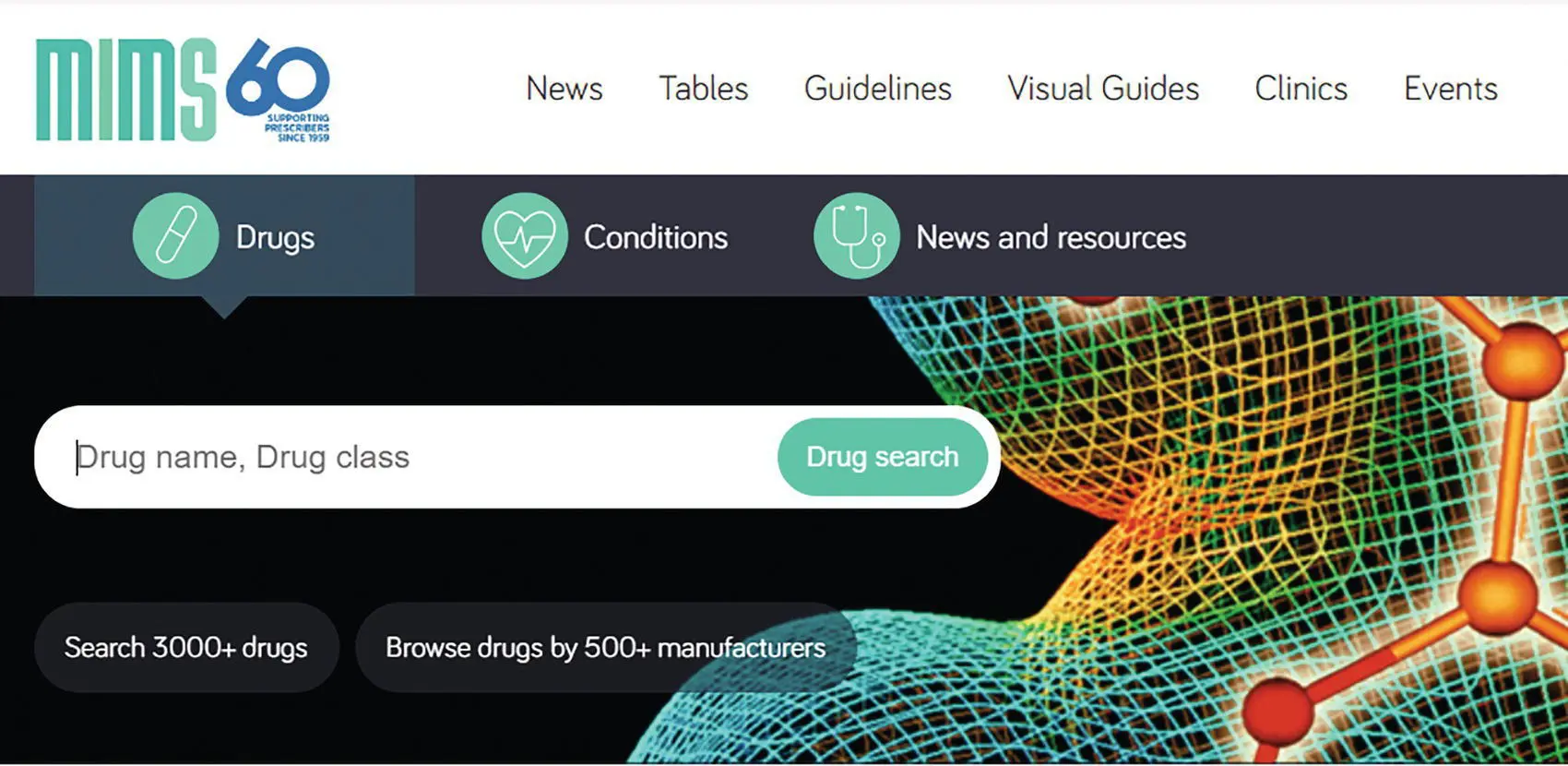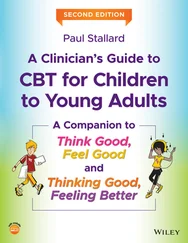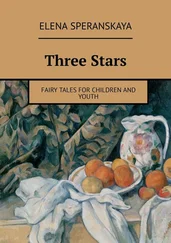
Figure 2.2 Contraindication and class monograph.
Key to safe and accountable practice is the recognition and reporting of suspected adverse reactions or effects of medication. The BNF and BNFc support active reporting of adverse reactions by both healthcare professionals and patients themselves or their carers. Using the Yellow Card Scheme , the MHRA collects information on medications, vaccines, herbal treatments, medical devices, defective medications and from 2016 counterfeit or fake healthcare products. The print copy of the BNF and BNFc have a small supply of yellow cards in the back matter. Alternatively, concerns can be raised using the UK Medicines and Healthcare Products Regulatory Agency (MHRA) Yellow card webpage ( https://yellowcard.mhra.gov.uk/). Chapter 19provides more details of this.
Monthly Index of Medical Specialities (MIMS)
Within a primary care setting you may also come across the MIMS prescribing guide. This is an up‐to‐date prescribing reference for healthcare professionals and it is available both in print and online. MIMS is updated constantly online, to reflect the latest approved prescribing information, along with the addition of new drugs and formulations, and also removes products that are no longer available. The printed version of MIMS is produced quarterly and includes all the updates from the corresponding three months of the online updates. MIMS is primarily intended for use by nurses and GPs working within primary care. A subscription is required for nurses who wish to receive the print version. All other prescribing healthcare professionals, such as paramedics, dietitians and physiotherapists, need to subscribe to MIMS to access either the online or print versions. MIMS is a helpful prescribing resource and provides:
News on changes that affect medicines and prescribing
Drug information for branded and generic products, updated daily
At‐a‐glance drug comparison tables including dosing and monitoring regimens, available presentations, prices, potential sensitisers and compatible devices
Quick‐reference summaries of key clinical guidance from authoritative national bodies including NICE and the Scottish Intercollegiate Guidelines Network (SIGN)
Online drugs shortages tracker showing branded and generic medicines that are out of stock
Online visual guides to help you identify, compare and recommend diabetes and respiratory devices
MIMS provides concise summaries of prescribing information for branded and generic products that can be prescribed in the UK, including devices listed in the section on permitted appliances within the Drug Tariff. Drugs that are blacklisted (i.e. not on the Drug Tariff and therefore not available on prescription within the NHS) are not listed and no information is given on the unlicensed or off‐label use of drugs.
The print edition of MIMS also includes a selection of the most popular drug reference tables. The full range of tables and drug listings are available online, together with at‐a‐glance summaries of national treatment guidance, helpful visual guides to diabetes and respiratory devices, there is also a prescribing resource centre for specific disease areas. The legal class categories in MIMS are the same as those within the BNF and listed in Table 2.2.
When you visit the home page of the MIMS online (see Figure 2.3) you are able to search for drugs (by drug name or drug class), browse news and resources by disease areas (from an A to Z list) or search for news, tables or guidance on any condition or drug. You are also able to search for drugs by manufacturer. Searching for a drug only returns a list if there is more than one hit (i.e. multiple drugs matching the search term and/or drugs matching the search term appearing in multiple sections) – otherwise you are taken to the drug entry. Clicking onto a drug will display all the different preparations, legal class, indications and dose recommendations for adults and children (where appropriate). The drug listing page will also display helpful links to any related guidelines or related conditions.

Figure 2.3 Home page of MIMS online (www.mims.co.uk/).
Source: Haymarket Media Group Ltd.
1 Search for paracetamol using the drug search box (Source: Haymarket Media Group Ltd.)
2 You will see that paracetamol‐containing products can be used for a number of different clinical conditions (migraine, pain and fever), with different strengths, formulations and combinations.
3 When paracetamol is combined with another product it is still important to understand the strengths of the individual compounds. Clink onto co‐codamol. You can see there is always 500mg of paracetamol within one co‐codamol capsule, but the dose of codeine phosphate could be 8, 15 or 30mg
4 Each form of paracetamol is only licensed for specific indications. Clink onto paracetamol infusion. You can see this would only be used as a short‐term treatment for moderate pain and fever when other routes are inappropriate.
5 For each paracetamol preparation there may be different contraindications. Click onto paracetamol/ibuprofen (combogesic). You will see the contraindications are alcoholism, aspirin/anti‐inflammatory allergy, active or history of gastrointestinal bleeding or peptic ulcer, severe cardiac, hepatic or renal failure, cerebrovascular or other active bleeding, blood formation disturbances and pregnancy (3rd trimester)
Searching within news and resources you will find links to relevant tables and summaries of national guidelines, as well as any information about the condition that has been in the news. You can use the filters on the right‐hand side to find the results of a particular type (for example, news) or from a particular year.
Many abbreviations are used in healthcare and it is important that you familiarise yourself with these to ensure you understand what they mean. Abbreviations are used within prescribing guides and in practice and it is always best to check what an abbreviation means if you are unsure what it means. A list of the abbreviations used in MIMS can be found at the front of every print issue and online.
You are asked to administer a medication in ‘S/C’ or ‘S‐C’ form
Do you get a glass of water for your patient, or an injection/infusion set?
What would the implications be of not understanding the correct abbreviation?
Be aware that sometimes the same abbreviation is used to mean different things. For some healthcare practitioners the abbreviation ‘s/c’ or ‘s‐c’ could be colloquially used to mean subcutaneous, but within MIMS (‘S‐C’) and the BNF (S/C) the abbreviation represents ‘sugar‐coated’ and not the route of administration. It is paramount that you are aware of the formal abbreviations in use and not colloquial, historical interpretations or slang. This is explored further in Chapter 4of this text, Medicines Management and the Role of the Healthcare Provider.
Electronic Medicines Compendium
The electronic medicines compendium (emc) contains up‐to‐date, easily accessible information about medicines licensed for use in the UK and can be found at ( www.medicines.org.uk/emc). The emc has more than 14,000 documents, all of which have been checked and approved by either the UK or European government agencies which license medicines. These agencies are the UK Medicines and Healthcare products Regulatory Agency (MHRA) and the European Medicines Agency (EMA). The emc is updated continually and you are able to browse for medicines, or active ingredients using the A – Z buttons. The emc contains regulated and approved information on medicines available in the UK including:
Читать дальше













